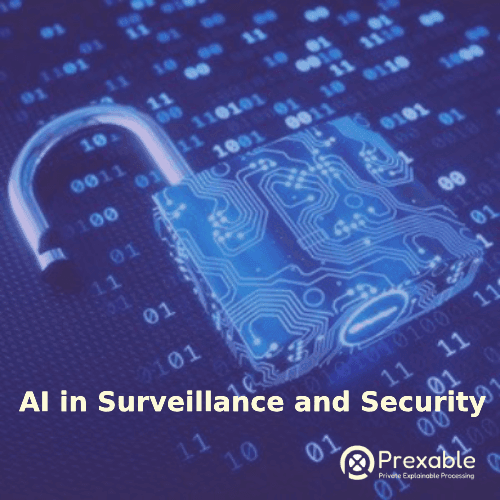The Role of AI in Surveillance and Security

Why AI is needed in Security and Surveillance
An average attention span for adult humans is something between 30 and 50 minutes, and when a person performs a task that is dull and repetitive for that period of time, their attention will decrease, which opens up a room for making errors. Especially in the field of security and surveillance, these errors can be consequential. Therefore, in order to eliminate these problems, industries utilize artificial intelligence (A). AI technologies can analyze vast amounts of data in real-time, enabling the detection of suspicious activities and potential threats that may go unnoticed by human operators. This proactive approach allows for early intervention and the prevention of security breaches, ensuring the safety of individuals and assets.
Furthermore, AI can automate surveillance processes, reducing the reliance on human operators and minimizing the chances of human error. AI-powered surveillance systems can continuously monitor video feeds, identify specific objects or behaviors of interest, and alert security personnel when necessary. This not only improves the overall accuracy and reliability of surveillance but also frees up human resources for more critical tasks.
Applications of AI security systems
Road and Traffic safety
The utilization of fixed algorithm analytics, specifically video content analytics (VCA), can identify undesired behavior within the camera’s field of view. This may include indicators like loitering or moving in the wrong direction. However, when it comes to detecting traffic violations, a different approach is required, and AI learning systems are better suited for this task. These systems leverage vast amounts of data to construct deep neural network (DNN) models, enabling automatic and reliable detection of traffic offenses.
Here are some examples of what AI-powered VCA can identify:
- Riding in groups of of more than two
- Riding without a Helmet
- Driving in the opposite direction or making illegal turns
- Using cell phones while biking or driving
- Driving without a seatbelt
- Violating no-parking signs
- Crossing stop-lines or disregarding signals
- Recognizing license plates
- Over speeding
Law enforcement
One of the most significant obstacles is upholding law and order, with occurrences of burglaries and homicides or breaching restricted areas being so common. To effectively identify individuals of interest, it is vital to swiftly and accurately detect and recognize faces in a nimble manner. With the usage of AI these detection, recognition and alerting can be done and establish a powerful system for it, some of the benefits of Facial Recognition application are:
- Automatic attendance
- Finding a wanted individual
- Automatic validation of authorized individuals
- Customizable MIS reports (alerts / movements / area-access / area-usage)
- Automated alerting for violations in restricted areas and entries of blacklisted/banned individuals
Another benefit of AI in this field is Post-incident investigation: the combination of AI algorithms and CCTV camera footage can be highly beneficial. For instance, machine learning techniques like color space conversion (RGB to HSV) and video regeneration aid in comparing videos with varying backgrounds. This proves invaluable during incident investigations as it facilitates: identifying the vehicle model, reconstructing a 3D face, enhancing video resolution, reducing noise and enhancing video clarity, improving license plate visibility, and incorporating predictive image suggestions into the search feature.
Cybersecurity
Cyberattacks are getting more frequent, more advanced, and more creative. Nearly every week, new malware is released, and the frequency of bots that steal information is also rising. Simply said, traditional software systems can’t keep up. In order to keep up with this using Ai in cybersecurity can be extremely beneficial. AI algorithms can be trained to predict and avoid system invasions. Their natural language processing capabilities enable them to gather and learn from data on their own. This lets them to detect malware, run pattern recognition, and detect malware or ransomware attacks before they enter the system. AI systems are also effective in predicting risks. They are accurate in determining IT asset inventory (complete record of all devices, users, and apps) and exposure to threats. Therefore, they can also forecast how and where you are most likely to be hacked, letting you to plan and allocate resources to the most vulnerable areas.
Conclusion
The purpose of security and surveillance is safety. While achieving a society completely free of crime may be an ideal goal, it is not realistically attainable due to the continuous efforts of criminal to find new ways to disturb this safety and exploit it. So, security systems must adapt and evolve accordingly. Technology serves as a valuable tool in this endeavor, as machines possess a consistent level of precision that compensates for human limitations. By integrating AI into surveillance and security systems, every detail, piece of information, and potential threat can be thoroughly examined and addressed. Embracing AI solutions is undoubtedly the path towards creating a safer environment for all.